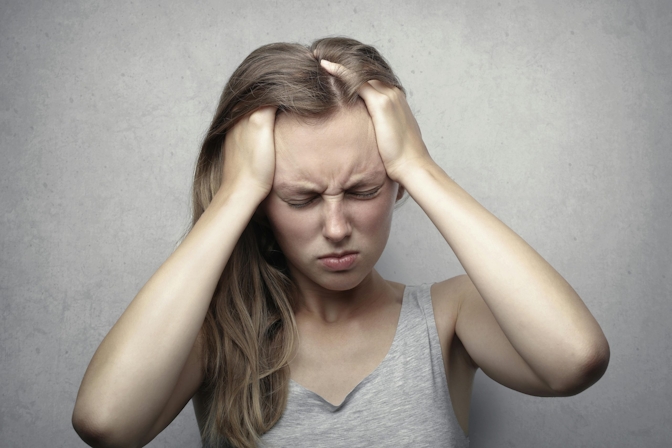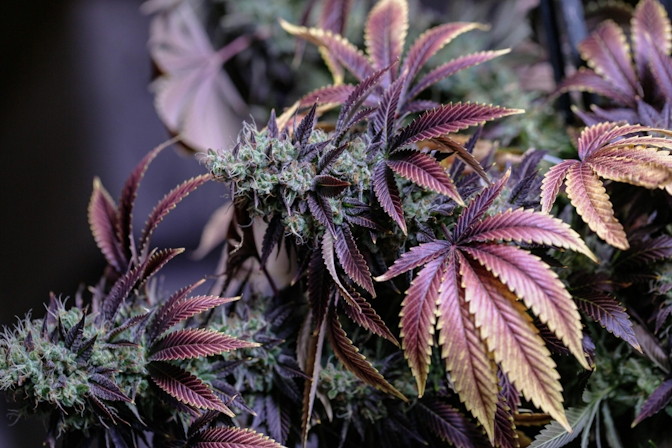
The Effects Of Weed On Your Health
When it comes to the effects of weed on your health, there’s a lot of misleading information out there. To make sense of it all, we’ve done the research.
More people are consuming cannabis than ever before. Yet, when it comes to the overall effects of cannabis on your health, there is a lot of misleading information out there. Unfortunately, thanks to decades of prohibition worldwide, cannabis has been long understudied. It is difficult to say with any certainty how the herb affects long-term health. However, new research gives insight into what the plant does to your brain and body. Here’s an overview of the effects of weed on your health:
Positive effects of weed on your health
Believe it or not, cannabis has many positive effects on your health. They range from improvements to quality of life to the potential treatment of debilitating diseases. In the short-run, cannabis can provide instant relief from various ailments, such as chronic stress and pain. Here are a few of the short-term effects of cannabis on your health:
1. Relaxation

Tim Mossholder / Pexels
There’s nothing nicer than plopping down on the sofa with a bowl after a tiring workday. One of the most well known and immediate effects of marijuana is relaxation. The moment you breathe in cannabis vapor, a flood of plant-based anti-anxiety compounds called cannabinoids travel through your blood and into your brain.
There are two primary cannabinoids in cannabis worth mentioning. The first is psychoactive tetrahydrocannabinol (THC), which provides the classic cannabis “high”. The second is cannabidiol (CBD), which does not cause a high. Studies have shown that both cannabis compounds can ease anxiety and promote a positive sense of well-being. Within minutes of smoking, you’ll be able to breathe a heavy sigh of relief and start smiling again.
2. Creativity

Andrea Piacquadio / Pexels
There’s a reason why so many famous artists smoked weed. Marijuana can make you more creative. When you smoke herb, activity in a certain part of your brain increases. That region is the frontal lobe. In fact, within 30 minutes of smoking, this region is fully activated in your brain. This is the same region of the brain that is responsible for critical thinking and creativity.
Cannabis also increases your ability to connect abstract thoughts. This ability is thought to be a prerequisite to creative thinking. In the art world, this is the epiphany. The moment everything seems to come together. For cannabis users, the light bulb of ideas seems to click on more frequently while you’re under the influence.
3. Pain relief

Keenan Constance / Unsplash
When you feel pain, your brain is sending you a distress call. It’s screaming: “HELLO! There’s something wrong here! Fix it!” You feel these distress calls as pain because of chemical signals sent by cells, communicated through nerves, and translated by the brain.
Natural compounds in cannabis cut in, disrupting the signals. THC and CBD interact with your immune cells by giving them instructions on what to communicate. When you consume cannabis, those chemical pain signals decrease. This lets you go about your day in peace.
The herb’s power as a natural analgesic works when it’s consumed orally (for example with cannabis coconut oil) or inhaled. It also works well when it’s applied topically. You can even make cannabis topicals yourself.
If you want to know more about it, you can also check the effect os weed for MS here.
4. Sleep

Andrea Piacquadio / Pexels
A heavy indica will put you to sleep fast and help you sleep more deeply and longer. Cannabinoids like THC induce sleep. At the same time, they also extend your time in deep sleep. Deep sleep happens during the third and fourth sleep cycles. During deep sleep, your body takes the time to repair itself and clear toxins from the brain. Studies have linked poor deep sleep with a variety of health conditions, including Alzheimer’s Disease.
5. Bliss

Aleksandra Sapozhnikovaa / Pexels
It may seem odd, but the effects of cannabis and the effects of exercise are really quite similar. After you workout, bliss-inducing chemicals like dopamine, anandamide, and serotonin are released in the brain. These compounds make you feel amazing. They’re the reason behind the “runner’s high” and why exercise is thought to treat depression.
When you use cannabis, both dopamine and serotonin are released. Further, THC takes the place of anandamide in the body, causing sensations of euphoria. That’s right: the “stoner’s high” is similar to a supercharged version of the “runner’s high.” This herb helps you feel blissful and full of joy.
6. Appetite

Mikhail Nilov / Pexels
Great food is one of the finest simple pleasures in life. We think it deserves to be appreciated. Weed can turn a simple meal into a smorgasbord of blissful flavors and aromas. Cannabis releases excess dopamine, which makes you feel pleasure. It also mimics anandamide, which makes you feel happy and hungry. All in all, this herb makes you love the experience of eating.
When you smoke weed, a couple of things happen that make you love your food. First, marijuana can help turn down the chatter and distraction in your brain. This allows you to give full attention to what’s presently in front of you. Second, cannabis tells your body to secrete hormones that make your food smell and taste better to you.
What do you get when you combine those two facts? An intensely focused and utterly blissful eating experience. Pretty much as close to a foodgasm as you’re going to get.
Long-term health benefits of cannabis
While cannabis has many delightful short-term benefits, there are some ways it may improve health in the long-term. While more research on the subject is sorely needed, it’s safe to say the plant is shaping up to be one of the most valuable superfoods and medicines that humans have come across in recent decades. Here’s why:
1. Nutrients
As neuroscientist and author Dr. Michele Ross sees it, cannabis is vitamin weed. THC and CBD are some of the most powerful antioxidants out there. Antioxidants are essential for reducing environmental damage to our cells.
Each time you breathe in car exhaust, accidentally whiff some kitchen cleaner or eat foods with residual pesticides, you’re taking in environmental contaminants that can damage our cells. This damage is called oxidative damage.
Excessive oxidative damage can contribute to a wide range of chronic health problems, including cancer and neurological disorders like Parkinson’s and Alzheimer’s Disease.
Cannabis helps by delivering powerful antioxidants and checking back oxidative damage. Oxidative stress happens when there are more harmful free radicals than there are positive compounds to clean them up. Antioxidants are the antidote to free radicals. In fact, the U.S. government even holds a patent on cannabinoids as potent, neuroprotective antioxidants.
2. Lower average BMI
Cannabis may make you hungry, but studies show that cannabis consumers have lower BMIs and smaller waistlines than the average person. Though some studies show that the herb is associated with increased visceral fat, canna-friendly folk are also less likely to be obese and appear to have a better ability to tolerate carbohydrates.
In a 2013 study published in the American Journal of Medicine, researchers at Harvard found that not only did cannabis consumers have lower BMIs, but they also seemed to better break down carbs. Lead study author Murray Mittleman told Time.
The most important finding is that current users of marijuana appeared to have better carbohydrate metabolism than nonusers.
3. Potentially reduced risk of diabetes
The impact of cannabis on weight gain and carbohydrate metabolism are certainly interesting. But, the herb seems to do a lot more than possibly help you look thinner. The same study mentioned above found that cannabis consumers had lower fasting insulin levels than their non-consuming counterparts.
Additional research has found that certain cannabis compounds, CBD and another cannabinoid called tetrahydrocannabivarin (THCV), may reduce appetite and help control blood sugar. In early human trials, diabetes patients treated with a combination of THCV and CBD showed improved blood glucose, improved insulin sensitivity, and had lower inflammation markers.
4. Anti-aging
As mentioned earlier, THC, CBD, and other cannabinoids are powerful antioxidants. Antioxidants protect us from DNA damage. DNA damage is one of the primary reasons humans age. As we get older, free radicals and environmental stressors spur the process of aging by damaging DNA. This damage is then copied as DNA replicates, causing subtle (and sometimes not so subtle) changes over time. These changes are expressed as aging.
Signs of aging include wrinkles on the skin, memory loss, and development degenerative diseases. Evidence suggests that the powerful antioxidants in cannabis may help reduce this damage, possibly checking back some signs of aging. Interested in putting it to the test?
5. Increased quality of life
When you’re stressed or down, when you’re tired and irritable, at the end of a long day, cannabis will be there for you. You don’t have to have a disease or health issue to benefit from the positive effects of cannabis. As Dr. Michele Ross says best,
You don’t have to have epilepsy to benefit from the power of cannabinoid therapy. I think that everyone should use it. You should learn about it, you shouldn’t be afraid.
Many studies show that cannabis helps people cope with physical pain, traumatic events, and daily stress. The herb may just be the medicine people need to prevent these day-to-day harms from evolving into more serious issues. Many patients find that the herb provides powerful symptom relief from a wide variety of ailments, including cancer, epilepsy, depression, anxiety disorders, and degenerative disorders.
6. Relief from debilitating diseases
Through cannabis, researchers have discovered the largest neurotransmitter networking in the body. This network is called the endocannabinoid system. Scientists found that our bodies need certain chemical compounds, called endocannabinoids, in order to keep the body in optimal balance.
Some researchers theorize that deficiencies or imbalances in endocannabinoids contribute to a host of modern diseases. Anandamide, mentioned above, is an endocannabinoid. Conditions as varied as cancer, multiple sclerosis, Alzheimer’s, diabetes, fibromyalgia, Crohn’s disease, post-traumatic stress disorder, and epilepsy, may all be connected to irregularities in the endocannabinoid system.
Not only does cannabis help relieve pain, fight nausea, and improve mood in those with chronic disease, but the herb can act as a supplement that replaces endocannabinoids in those that are deficient. The plant is a natural source of these important chemical ‘nutrients’ when the body does not have enough of them on its own.
In a way, cannabis is to endocannabinoid deficiency what vitamin C is to scurvy. This is why the plant is so helpful to both humans and animals as a medicine. Research into the endocannabinoid system has only just begun, and further investigation will surely unveil more about this important network.
Negative effects of weed on your health
Nothing in life is perfect. As with all good things, consuming cannabis comes with some costs. As a responsible consumer, it’s up to you to decide whether or not the benefits are worth the harms. From person to person, that answer will be different.
Fortunately, though, many of the harms caused by cannabis can be reduced to a minimal impact. Many of the negative effects of marijuana come from the way that you consume the herb. Because of this fact, we’ve outlined what those effects are and how to minimize them in the sections below.
1. Paranoia

Cottonbro Studio / Pexels
Many of us have experienced it. You smoke a little too much herb and all of a sudden you’re freaking out because you think you look a little too stoned for the public eye. When it comes to cannabis and anxiety, imagine an inverted bell curve on a graph. You smoke a little bit, your anxiety level drops down. You smoke too much of an incredible high-THC strain, and that anxiety can shoot right back up again.
For more information on why cannabis eases anxiety but causes paranoia, check out the full article here.
2. Disorientation

Andrea Piacquadio / Pexels
Don’t forget: THC is psychoactive. When you consume activated THC, you are taking a psychoactive substance. For newbie consumers, this can feel weird. When you are disoriented, your sense of place and purpose may seem bunk. You may feel like you’re not quite living in reality, or that you’re watching a show from afar. This feeling can be very uncomfortable for some people.
To others? The cerebral disorientation is enjoyable. Filled with laughter, a sense of peace, and a brighter outlook on the world. As you become more accustomed to cannabis, this disorientation subsides. Studies have even found that regular medical users are able to drive and function more or less on-par with the average non-smoking consumer. Others find that they have an easier time focusing on work and getting things done.
The truth is, this experience is different for everyone. If cannabis makes you uncomfortable, you may want to switch to a low-THC strain or avoid the plant. If you find that the benefits outweigh the harms? More power to you. You have the power, freedom, and ability to do what’s right for you.
3. Racing heart
For up to three hours after smoking, cannabis may increase heart rate Your heart is affected the most within the first hour of smoking the herb. In fact, a Boston study found that your risk of having a heart attack is 5 times that of a non-smoker during the first hour.
But don’t freak out! This number is only marginally higher than your risk of having a heart attack while having sex, or getting strenuous exercise. That risk also declines quite rapidly within the second and third hours after smoking. By comparison, your likelihood of having a heart attack while on cocaine is 25 times higher than average.
However, this racing heart may be troubling to those who have pre-existing heart conditions.Bottom line: if you feel like your heart is beating a little too fast, don’t risk it. Try not to exert yourself. Call an emergency medical professional if you experience intense pain like you’re having a heart attack. This racing heart occurs with high-THC strains.
Short-term side effects caused by smoking
1. Mucus
Heat, plant particles, and bits of residual pesticides or fertilizers all have an impact on your health when you smoke herb. When you take a lighter to a joint, that hot smoke only has a second or two to cool down before you breathe it into your body. All that heat is irritating to the tissues in your throat and lungs.
Research shows that cannabis can cause symptoms of chronic bronchitis, as well as reversible microscopic and visible damage to large airways. As lung tissues become inflamed and irritated, they may begin to secrete mucus. Mucus helps your body flush those hot, ashy plant particles that you’ve just inhaled. This mucus may give you an uncomfortable cough. The coughing will usually end in a minute or two.
The lungs heal and symptoms go away if you abstain from the herb for a while or switch to a gentler consumption method, like vaporization.
2. Allergy
Some people may have an allergic reaction to cannabis. This reaction could be to the cannabis plant itself, or something that happened to hitch a ride on your herb. A flower that hasn’t been properly flushed of fertilizers, pesticides, or miticides may increase your chances of having an allergic reaction. If you’re lucky enough to live in a legal state, opt for cannabis that has been tested and found pesticide-free. (Check if your country has legalized weed in this post: “Where is marijuana legal?”)
Cannabis that is contaminated with molds can also have a negative effect on your health. For some, molds and mildews may trigger asthma symptoms, chest pain, or contribute to an allergy attack. To avoid molds and mildews, it’s best to purchase cannabis from laboratory tested sources whenever possible.
Some people may also be sensitive to the smoke from rolling papers. When you smoke a joint, blunt, or spliff, you’re also smoking the paper that your weed is wrapped in. While it may seem obvious, it’s easy to forget that any ink or bleaching on the rolling paper may cause allergic reactions. The risk of this happening can be minimized by switching up your smoking method.
3. Headache
Just like mucus and allergic reactions, how you smoke plays a major role in whether or not you develop a headache. Unless you’re using raw rolling paper, rolling papers of any kind can have irritating chemicals in them. These chemicals are free radicals that can damage your cells and cause side effects.
Residual pesticides and fertilizers can also cause nasty headaches. Even medical cannabis samples taken from the Los Angeles Area tested positive for over 1600 times the recommended levels of residual pesticides. It’s statistics like this that make cannabis testing so important. If you can, do opt for buying products that have been tested. If you’re growing yourself, consult a local testing lab about how to properly flush your plants before harvest.
Long-term side effects of cannabis
1. Tar buildup
Tar buildup is a big one, but it’s also a risk that can be entirely avoided if you choose to do so. Tar buildup happens when you inhale smoke from any plant material. Though difficult to see with the naked eye, smoke from dried herbs contains thousands of tiny burned plant particles. When these particles stick together, settle, and accumulate, these particles create a tar-like resin.
You’ve seen the black stuff that coats your pipe, right? That’s resin. That’s also what you’re breathing into your lungs.
Don’t sound the alarms quite yet, though. Unlike cigarettes, cannabis consumers tend to smoke only a few joints a day at most. You can reduce the amount of tar you take into your lungs by switching to a bong, water pipe, vaporizer, dab rig, or filtered joint. Exercise and deep breathing help the body heal and break up junk that gets stuck in your lungs.
2. Less REM sleep
Cannabis users may get more deep sleep, but they also spend less time in REM sleep. REM stands for Rapid Eye Movement. When you’re in this sleep phase, the body is at its closest to being awake. Unsurprisingly, REM is the final phase of the 90-minute sleep cycle.
REM sleep is the time when you’re most likely to have vivid dreams and nightmares. Researchers really don’t know exactly why this sleep cycle is beneficial to our health. But, one leading theory is that this stage of the sleep cycle helps us file away memories and prepare for anticipated tasks upon waking.
Less REM sleep may mean less ability to remember things you learned the day before. It can also mean that you may wake up more forgetful and less prepared for the day ahead. However, at this point, these are theories based on educated and not concrete facts.
3. Potential high risks for adolescents
Let’s put it this way: young brains are still developing. What helps brain development the most? A healthy diet with plenty of plants and healthy fats, emotional support from friends and family, academic challenges, and exercise. Can cannabis help the developing brain? Perhaps only if the adolescent in question had an endocannabinoid deficiency.
More research needs to be done to show exactly how cannabis affects the teenage brain. However, the available research suggests the largest risk group is chronic consumers under the age of 16. One study suggests that chronic cannabis use in those under 16 may cause brain changes that lead to greater impulsivity and attention difficulties.
These changes were not present in those that began consuming over the age of 16. However, this study did not adequately show that cannabis is the cause of these changes. It’s possible that other contributing factors perhaps made these teens more inclined to consume cannabis.
Other studies in identical twins have shown that teen cannabis consumption was not associated with significant drops in IQ. Though, because the teenage brain is still developing, it’s wise for the youngins to hold off unless the herb is needed for medical purposes.
What about psychosis?

Anh Nguyen / Pexels
The relationship between marijuana and psychosis is a hot debate topic these days. On one hand, some studies show that psychotic symptoms increase in people more prone to psychotic behavior. Other studies show that marijuana may help ease psychotic episodes in schizophrenics. Some have also suggested that instances of marijuana use are so high among those prone to schizophrenia because they are self-medicating with the herb.
Thus far, there is no conclusive evidence that cannabis causes psychosis. However, those with a predisposition to psychotic disorders may be more likely to develop early onset symptoms with cannabis, especially if they began consuming chronically at an early age.
For more information and psychosis, check out the full article here.
How to reduce the negative side effects of cannabis
The vast majority of the negative effects of cannabis can be mitigated with education and a few simple tricks. Here are five simple ways to reduce the negative side effects of cannabis:
1. Pick safer smoking tools
Many of the risks of smoking cannabis can be reduced by picking a safer smoking tool. While joints are amazing, they’re also the harshest form of consuming the herb. If you’re looking to mitigate weed’s effect on your health, follow these simple guidelines:
- Avoid: screenless pipes, joints, blunts
- OK: bubblers, bongs, water-based dab rigs
- Best Choice: convection vaporizers.
Givethe PAX 3 Vaporizer a go, available at the Herb Shop.
For a full breakdown of how cannabis affects your lungs, check out the full article here.
2. Balance your strains

Diyahna Lewis / Unsplash
Add a little variety to your smoking routine. Smoking extremely high-THC strains can cause some people to feel overly anxious or paranoid. What helps with that? A little CBD. Finding strains that have a well-balanced ratio between the two cannabinoids can be a bit tricky. But, fortunately, cannabis consumers have a lot more options these days.
The compounds found in the cannabis plant work synergistically. When consumed together, they work in harmony with your body to regulate your individual biochemistry. In healthy consumers, smoking too much of one and not enough of the other may trigger some of those unwanted short-term side effects.
Well-balanced strains:
To browse both high-THC and high-CBD strains, check out the strain database here.
3. Take tolerance breaks
If you’re a regular marijuana user, then you know that after a while you’ll need to smoke a whole lot of weed in order to feel high. If you’re burning through your stash, it may be time for a tolerance break. A “T-break” is when you take a few days to a week off from smoking weed.
When you smoke weed regularly, you start to build up a tolerance to the herb’s effects. Your body becomes used to the constant flood of cannabinoids, and gets lazy about producing endocannabinoids of its own and may become less responsive to cannabinoids on a cell receptor level. Laying off for a while gives your body a little reset.
As a general guide, consider using another bell-curve analogy. For the healthy, non-endocannabinoid deficient person, your optimum health may increase with semi-regular cannabis consumption up to a point. After you cross that threshold, you begin to see some negative effects.
4. Practice deep breathing

Spencer Selover / Pexels
The majority of the lung damage caused by marijuana can be eliminated via deep breathing. Like every muscle, your lungs need exercise. If you’re sitting all day and you avoid exercise, you’re probably not clearing a whole lot out of your lungs.
If you take shallow breaths, you’re only breathing into the top portion of the lungs. Every breath you take expels toxins and carbon dioxide. Breathing into only a small portion of your lungs leaves toxins trapped deep down in the organ. Over time, these toxins damage your lungs.
Flush toxins and breathe easy by exercising at least 20 minutes a day. Take the time to focus on inhaling and exhaling fully. Practice some yoga breaths or test out one of the lung cleansing techniques outlined here.
5. Keep a healthy attitude
If you want to live a happy, healthy life, outlook means everything. As with any habit, it’s important to approach cannabis use with a healthy attitude.
Be mindful of whether or not you’re using cannabis to escape or using it as a tool to help you heal and progress. If you smoke cannabis to avoid facing your problems head on, you won’t find much relief for what ails you. With this simple green flower, it’s all about balance. Don’t overdo it, and you’ll probably be just fine.
Do the benefits of marijuana outweigh the risks? What do you think? We’d love to know what effect cannabis has had on your life. Share your thoughts and story with us on social media! It’s worth it, we promise. ?
There are other articles you can be interested in:
- Does weed make you smarter?
- Is weed illegal in Japan?
- Aurora Merger: Largest Cannabis Producer in The World
Herb Recommended Products:
READ MORE










